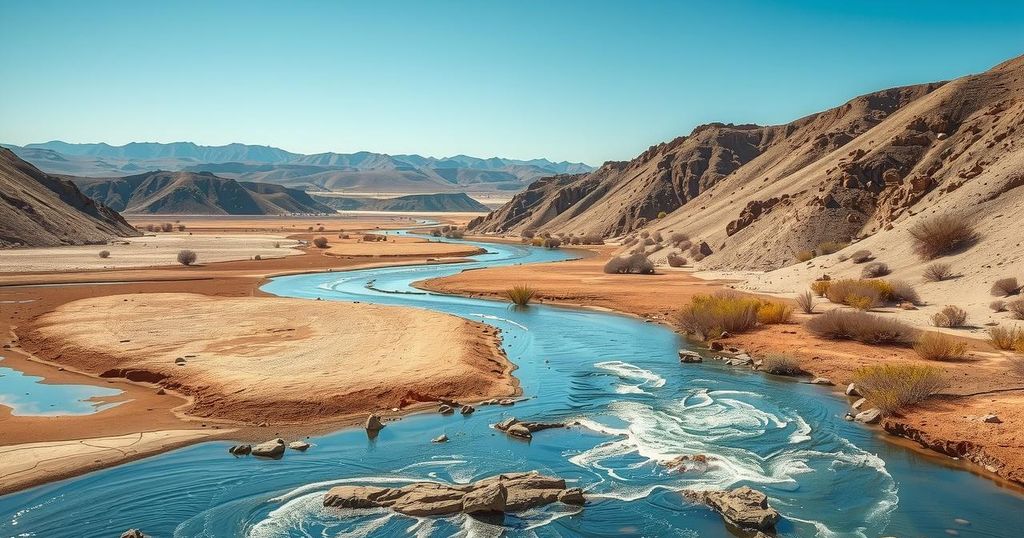Understanding South Africa’s Water Crisis: Key Facts and Insights

The article outlines critical facts about South Africa’s water crisis, revealing that 50% of potable water is lost, 3 million citizens lack basic supply, and poor sanitation leads to numerous health issues. It highlights the agricultural sector’s high water usage and significant compliance failures among Water Services Authorities, emphasizing the urgent need for effective water management and awareness.
Water is an essential resource, and as highlighted by the South African Department of Water and Sanitation, it is synonymous with life. With World Water Day approaching, it is crucial to comprehend both the global and local water crisis. Here are ten significant facts regarding South Africa’s water challenges that underscore the urgency of this issue.
Approximately 50% of South Africa’s potable water fails to generate revenue, indicating that this extensive loss results from system inefficiencies and leakages. Meanwhile, over 3 million South Africans struggle to access basic water supply, revealing a critical gap in water availability for many citizens. Furthermore, in Johannesburg’s informal settlements, 52% of residents have resorted to constructing their own pit latrines due to inadequate facilities.
The impact of poor water access extends beyond local communities. The United Nations Development Programme reports that every year, 443 million school days are lost globally because of illnesses caused by insufficient water access or poor water quality. Tragically, the South African Human Rights Commission states that 115 individuals in Africa succumb every hour to diseases related to contaminated water, poor hygiene, and sanitation issues.
In terms of regional climate, South Africa experiences a rainfall deficit, receiving 40% less precipitation than the global average. Despite this, the water usage in South Africa averages 237 liters per person per day, surpassing the global average of 173 liters per person. This discrepancy highlights a concerning trend for a nation characterized as water-scarce.
According to the Council for Scientific and Industrial Research (CSIR), water allocation in South Africa is heavily skewed: 61% is utilized for agriculture, 27% for households, and only 7% for industry. Additionally, a recent Blue Drop Report revealed concerning compliance issues among South Africa’s 144 Water Services Authorities (WSAs), with 24 authorities making no effort towards Blue Drop compliance and 40 classified as critically underperforming.
The Water Services Act mandates a minimum standard of 25 liters of water per person per day as a basic supply. However, during Cape Town’s ‘Day Zero’ water crisis, the average daily supply fell to 50 liters per person, emphasizing the severity of water scarcity in the region.
South Africa’s water crisis is underscored by alarming statistics, highlighting inefficiencies, inadequate access to clean water, and significant health impacts resulting from poor sanitation. With a considerable portion of potable water lost and millions lacking basic supplies, effective management and strategic interventions are crucial. Understanding these complexities and the disparity in water usage can guide efforts to address these critical challenges.
Original Source: infrastructurenews.co.za







